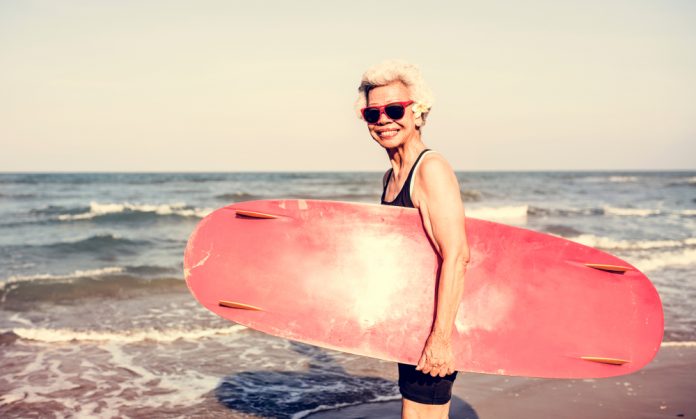If you believe what you see in advertising, you would think all older people are doddery, deaf and daggy.
But there is little truth in this: most older people in our society are far from the stereotype, with a huge portion active, vibrant and engaged in the texture of life.
Australian Institute of Health and Welfare figures show 16 per cent of the population is aged over 65 and the older demographic is growing faster than the younger age groups. More than a third of the nation is over 50.
One in five of those people are still working after age 65 (with more projected to stay working as inflation bites) and a third are what health authorities call “active aging” and/or volunteer in some capacity.
These are far from the cartoonish fuddy-duddies depicted in ads.
Imagine if advertisers painted people with disabilities, Indigenous Australians or women in the same stereotypical way? Picture, if you will, the utter outrage.
Perhaps the problem is partly that the people making the ads are younger, or that it is easier to regurgitate old ideas than to create new ones.
Data from recent surveys conducted by lobby group Age of Majority in the US show that three specific stereotypes of older consumers in ads stand out: a lack of ability to use technology, physical weakness and mental inferiority. These stereotypes are not based in fact, but they persist.
The bias towards the young in advertising traces back decades.
During the Mad Men heyday of the 1960s, young people represented the most potent growth sector of the economy because millions of Baby Boomers hadn’t decided what kind of home gadgets, clothing or cars they preferred yet.
Older people were thought to be frugal and already brand loyal, so it was clever for product marketers to target people between 15 and 25, an age bracket thought to be the time people decide what they like.
But older people are not like those in days of yore. They move and flex just like other groups. They can change their minds on brands, many are digital-early adopters and many shift attitudes with the advent of new information.

The point is, they are not all tired and grey and not all conservative, just as they are not all aping young or taking up golf or mountain climbing in their advancing years.
The aged care sector itself rests on the older stereotypes, with research published in December in the Gerontologist finding retirement villages in the UK and Australia tend to treat “older people” as a homogeneous category.
The reality is that residents have diverse needs and span up to four decades – from 50 to over 90.
Advertisers should also be reminded that older people hold most of the wealth: they have more spending money on average than younger people and are savvy about how they spend it.
It is possible to be grey-haired and radiant, older and engaged.
And it is time advertisers got on board with that.
Dr Jane Stephens is a UniSC journalism lecturer, media commentator and writer. The views expressed are her own.





